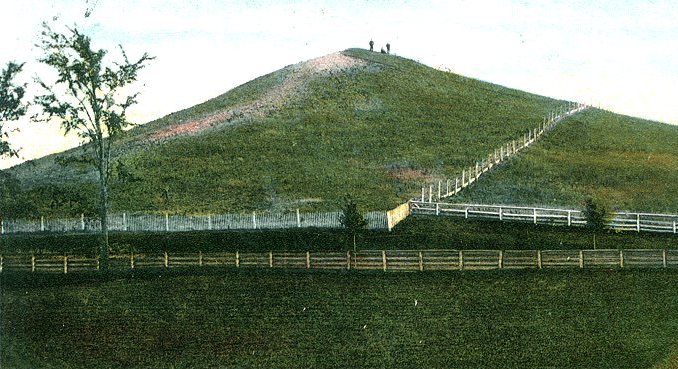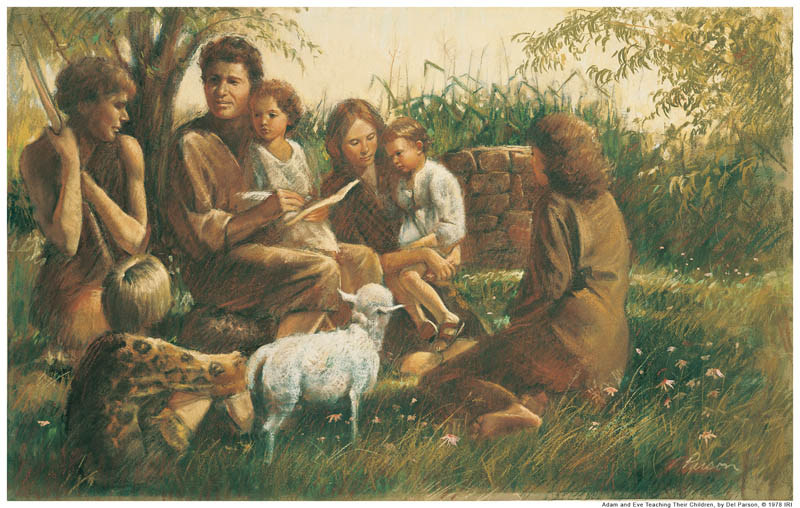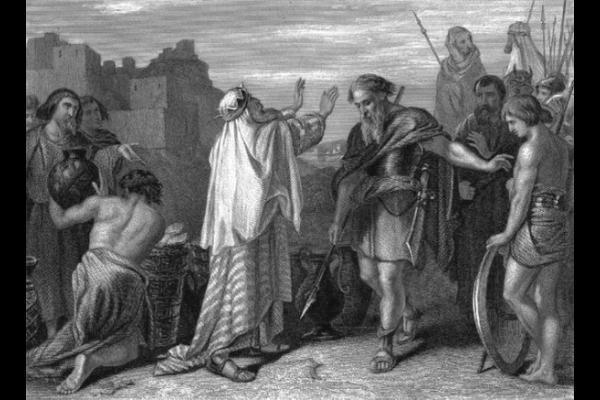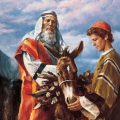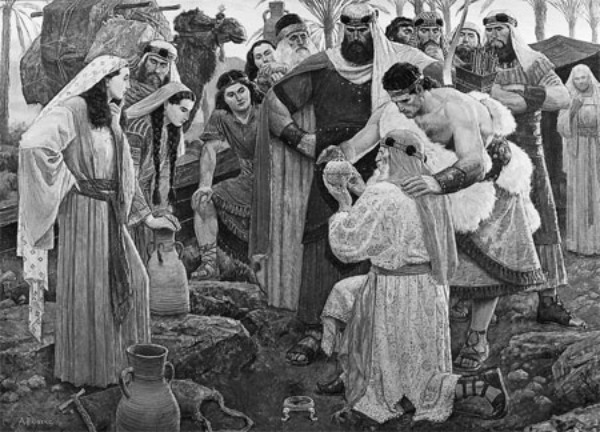Question
Dear Gramps,
I understand that there was a battle near the Hill Cumorah or Ramah where two million Jaradites were wiped out as a civilization. Later the Nephites battled there and were all killed but Moroni. Have archeologists ever dug up remains of these two great battles in that area?
Gary
Answer
Dear Gary,
There indeed is some archealogical evidence of great battles in the area near the Hill Cumorah, but the academic archeologists have paid little attention to this area, as the Book of Mormon has not yet achieved the same prestige in academic circles as an historical document as has the Bible .
Here is a statement by Joseph Fielding Smith Jr., quoting the Prophet Joseph Smith, and a subsequent commentary on that quote:
The brethren procured a shovel and a hoe, and removing the earth to the depth of about one foot, discovered the skeleton of a man, almost entire, and between his ribs the stone point of a Lamanitish arrow, which evidently produced his death. Elder Burr Riggs retained the arrow. The contemplation of the scenery around us produced peculiar sensations in our bosoms; and subsequently the visions of the past being opened to my understanding by the Spirit of the Almighty, I discovered that the person whose skeleton was before us was a white Lamanite, a large, thickset man, and a man of God. His name was Zelph. He was a warrior and chieftain under the great prophet Onandagus, who was known from the Hill Cumorah, or eastern sea to the Rocky Mountains. The curse was taken from Zelph, or at least, in part–one of his thigh bones was broken by a stone flung from a sling, while in battle, years before his death. He was killed in battle by the arrow found among his ribs, during the last great struggle of the Lamanites and Nephites. (Doctrines of Salvation, Vol.3, p.238)
The complex textual history of the story is fully documented by Kenneth Godfrey and need not be repeated here. What is important is that many significant qualifiers were left out of the printed version. Thus, whereas Wilford Woodruff’s journal account mentions that the ruins and bones were “probably [related to] the Nephites and Lamanites,” the printed version left out the “probably,” and implied that it was a certainty. Godfrey examines several similar shifts in meaning from the original manuscripts to the printed version. “The mere ‘arrow’ of the three earliest accounts became an ‘Indian Arrow’ (as in Kimball), and finally a ‘Lamanitish Arrow.’The phrase ‘known from the Atlantic to the Rocky Mountain,’ as in the McBride diary, became ‘known from the Hill Cumorah’ (stricken out) or ‘eastern sea to the Rocky Mountains.’” The point here is that there are many difficulties that make it nearly impossible for us to know exactly what Joseph Smith said in 1834 as he reflected on the ruins his group encountered in Illinois.” (Journal of Book of Mormon Studies: Basic Methodological Problems with the Anti-Mormon Approach to the Geography and Archaeology of the Book of Mormon, p.175)
That account identifies the Lamanites as being associated with the Cumorah site, but does not suggest any large battles. However, J.M. Sjodahl has published this interesting account of evidence that the area was indeed a significant battle site.
It has been stated that there is no evidence near Cumorah of fierce battles in the past. That statement is completely answered in the following letter from Sister Susa Young Gates to the author: ‘In 1901 Elder Claude Taylor and myself visited the Hill Cumorah and had an interview with Mr. and Mrs. Samson who then owned the Hill and the farm adjoining. Mr. Samson was the brother of Admiral Samson, but he was very prejudiced against the Mormon people. However, we spent some time talking with him. Outside the farmhouse Elder Taylor and myself noted several bushel baskets filled with arrow heads and I asked Mrs. Samson what they were. She said they had just begun to plow up the hill Cumorah and around the hill, to plant some crops, and they turned up these arrow heads by the basket full.’ I asked her what she did with them. She replied that she sold them to tourists who passed by. I inquired the price of them, and she replied, ‘Twenty-five cents.’ I purchased two and when I returned home I gave one to President Joseph F. Smith. The other one I have kept and it is still in my possession.This seems good evidence of the wars which have been fought around this historical hill.” (J. M. Sjodahl, An Introduction to the Study of the Book of Mormon, p.7-8)
Gramps

